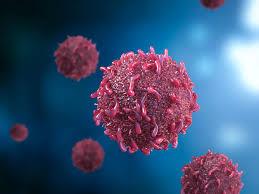n the past two decades, the Western world has witnessed a rapid increase in throat cancer cases, some even labeling it as an epidemic. This surge primarily attributes itself to a specific type of throat cancer known as oropharyngeal cancer, affecting the tonsils and back of the throat. The leading cause behind this alarming trend is the human papillomavirus (HPV), a virus also responsible for cervical cancer. Oropharyngeal cancer has now surpassed cervical cancer in prevalence in both the US and the UK.
HPV and Its Link to Oropharyngeal Cancer
HPV is a sexually transmitted virus, and when it comes to oropharyngeal cancer, the main risk factor is the number of lifetime sexual partners, particularly those engaging in oral sex. Astonishingly, individuals with six or more lifetime oral-sex partners are 8.5 times more likely to develop oropharyngeal cancer compared to those who do not practice oral sex.
Understanding the Mystery of HPV and Oropharyngeal Cancer
While behavioral trend studies reveal a high prevalence of oral sex in certain countries, only a small number of individuals develop oropharyngeal cancer. The reasons behind this remain unclear. The prevailing theory suggests that most people contract HPV infections but can clear them effectively. However, a small fraction of individuals may not clear the infection, possibly due to an aspect of their immune system. In these cases, the virus replicates continuously and, over time, integrates into the host’s DNA at random positions, potentially leading to cancerous cell formation.
The Role of HPV Vaccination in Prevention
HPV vaccination for young girls has been implemented in many countries to prevent cervical cancer. Emerging, albeit indirect, evidence suggests that it may also be effective in preventing HPV infection in the mouth. Additionally, boys may benefit from “herd immunity” in countries with high vaccine coverage among girls. This combined effort holds the promise of reducing oropharyngeal cancer in the coming decades.
Challenges in Achieving Universal HPV Vaccination
Universal HPV vaccination policies have been adopted by several countries, including the UK, Australia, and the US, extending the recommendations to include young boys. However, achieving universal coverage remains a challenge. A significant portion of the population expresses concerns about the safety and necessity of HPV vaccination, and in some cases, misconceptions about its potential to encourage promiscuity persist.
The Impact of Changing Behaviors
Interestingly, population studies suggest that, possibly to avoid penetrative intercourse, some young adults turn to oral sex as an initial sexual activity. This shift in behavior may have implications for HPV transmission and the development of oropharyngeal cancer.
Navigating Vaccine Hesitancy and the Pandemic
The coronavirus pandemic has introduced its own set of challenges. Temporary disruptions in school-based vaccination efforts and the growing trend of vaccine hesitancy in many countries pose obstacles to achieving widespread HPV vaccine coverage. These complex dynamics make addressing population behavior and health strategies far from straightforward.
Hope on the Horizon
While the relationship between oral sex, HPV, and oropharyngeal cancer remains intricate, the availability of HPV vaccination offers a glimmer of hope. As researchers continue to unravel the mysteries surrounding this connection, increasing vaccine coverage and addressing vaccine hesitancy are pivotal steps toward reducing the burden of this preventable cancer.
